Two resistance R1 and R2 are joined as shown in figure to two batteries of emf E1 and E2. If E2 is short circuited, what is the current through R1 ?
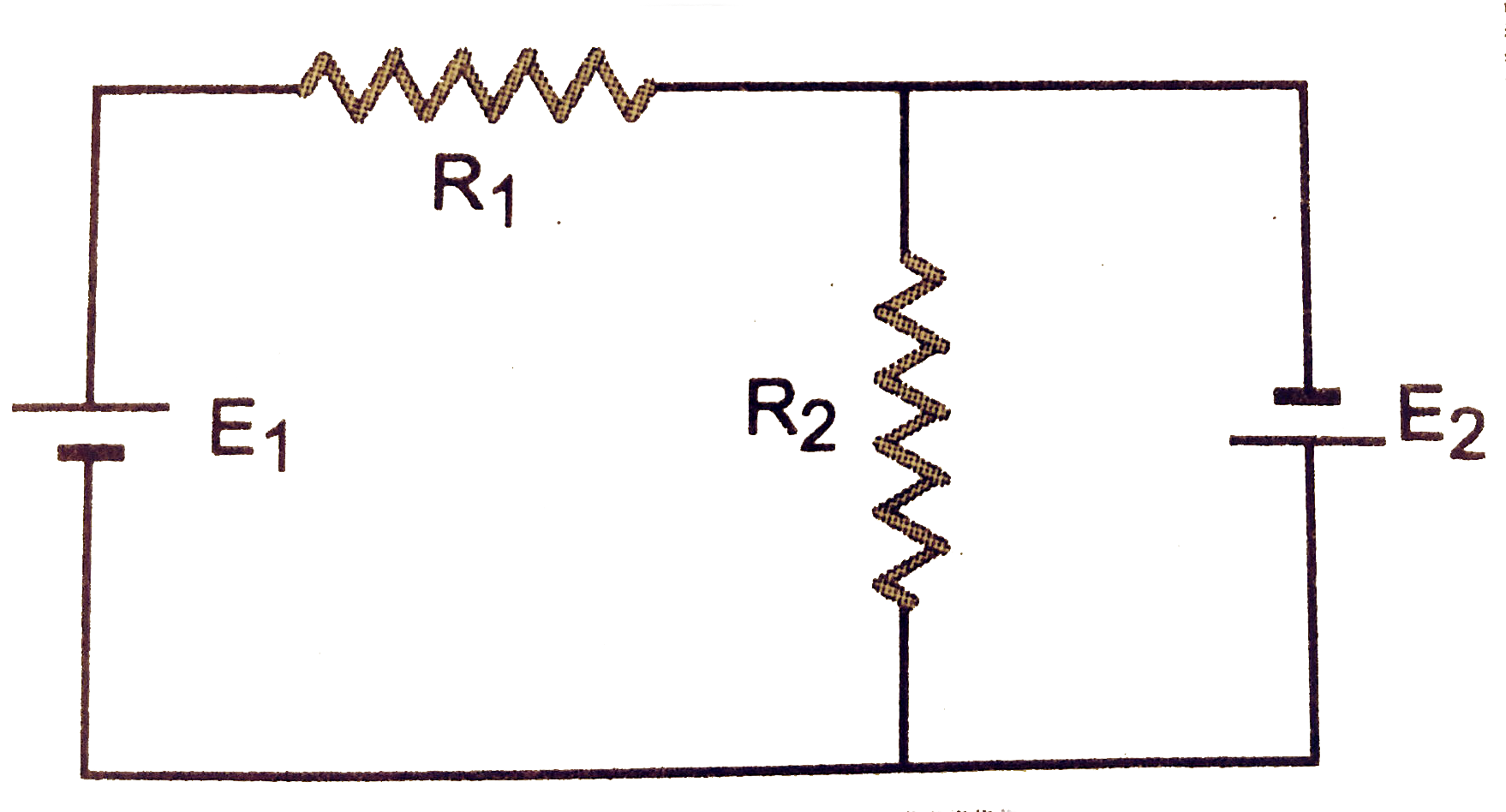
When E2 is short circuited, it means positive pole of battery E2 is connected to negative pole of battery E2. The battery gets discharged. The resistance of the arm become zero. The current from cell E1, flowing through R1 will not pass through R2, but will go through the short circuited path. Therefore, R2 becomes inffective. Now current through R1 is due to emf E1 with resistance R1 in circuit, i.e., I=E1/R1
Topper's Solved these Questions
- CURRENT ELECTRICITYBook:PRADEEPChapter:CURRENT ELECTRICITYExercise:Conceptual Problems
Explore 3 Videos
- CURRENT ELECTRICITYBook:PRADEEPChapter:CURRENT ELECTRICITYExercise:Very short Q/A
Explore 7 Videos
- COMMUNICATION SYSTEMSBook:PRADEEPChapter:COMMUNICATION SYSTEMSExercise:MODEL TEST PAPER-2
Explore 9 Videos
- DUAL NATURE OF RADIATION AND MATTERBook:PRADEEPChapter:DUAL NATURE OF RADIATION AND MATTERExercise:Exercise
Explore 191 Videos
Similar Questions
5 resistances R1,R2,R3,R4,R5 are joined as shown in the figure.

The values of R1,R2,R3andR4 are so adjusted that the current in the circuit does not change for any value of the resistance R5. This is possible for the following relation
View SolutionIn the cirucit (figure6.3) resistance R1andR2 are known and cells ar of emf e1ande2 and negligible internal resistance. At what value of R will the thermal power generated in it be the highest? What is it equal to?
View Solution
Knowledge Check
Two resistors of resistance R1 and R2 having R1>R2 are connected in parallel. For equivalent resistance R, the correct statement is
AR>r1+r2BR>√r1r2Cr1<R<r2DR<r1In the circuit shown in figure-3.344 if battery is ideal , then time after which current in R3 becomes (1/e) time that of maximum current through it is :
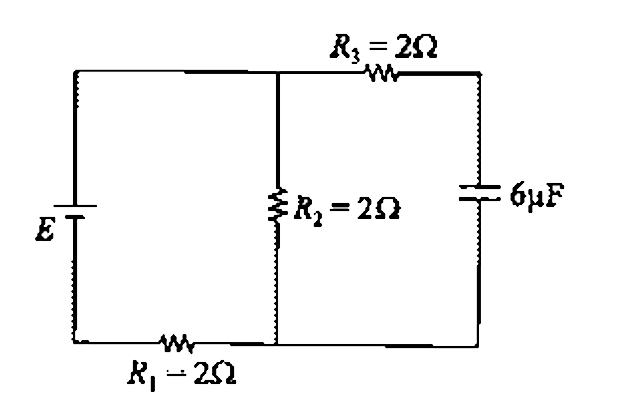 A18μsB12μsC6μsD2μs
A18μsB12μsC6μsD2μsAssertion:- To cells of unequal emf E1 and E2 having internal resistances r1 and r3 are connected as shown in figure. Then the potential difference across any cell cannot be zero.
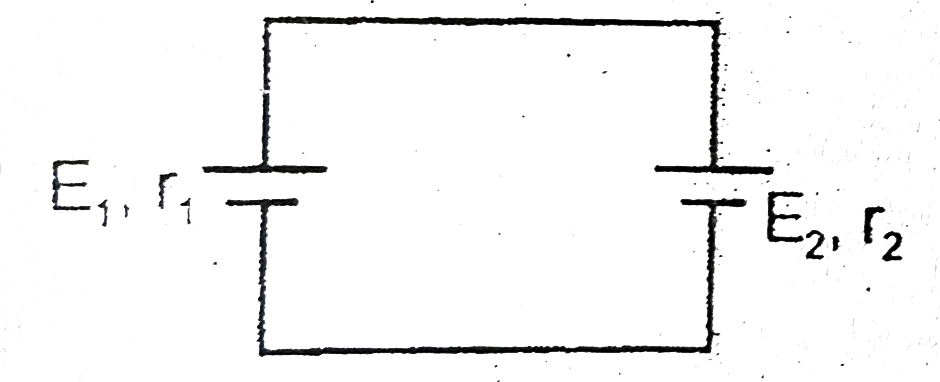
Reason:- If two cells having nonzero internal resistance and unequal emf are connected across each other as shown, then the current in the circuit cannot be zero.
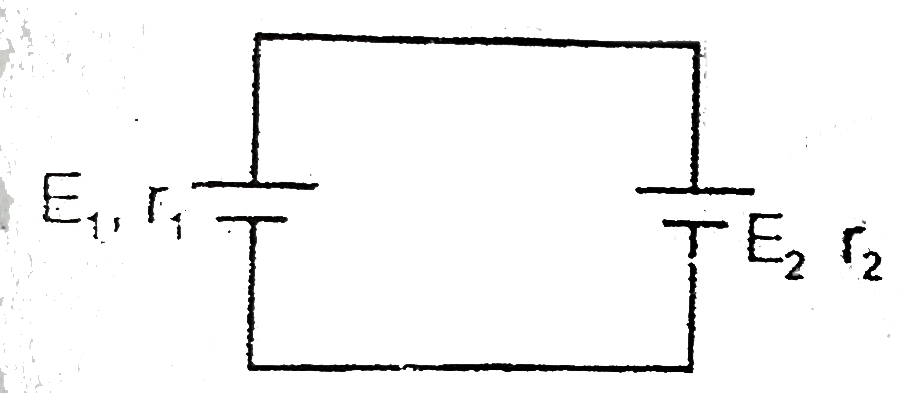 AIf both Assertion & Reason are True & the Reason is a correct explanation of the Assertion.BIf both Assertion & Reason are True but Reason is not a correct explanation of the Assertion.CIf Assertion is True but the Reason is False.DIf both Assertion & Reason are False.
AIf both Assertion & Reason are True & the Reason is a correct explanation of the Assertion.BIf both Assertion & Reason are True but Reason is not a correct explanation of the Assertion.CIf Assertion is True but the Reason is False.DIf both Assertion & Reason are False.
Three identical resistors R1=R2=R3 are connected as shown to a battery of constant e.m.f . The power dissipated is
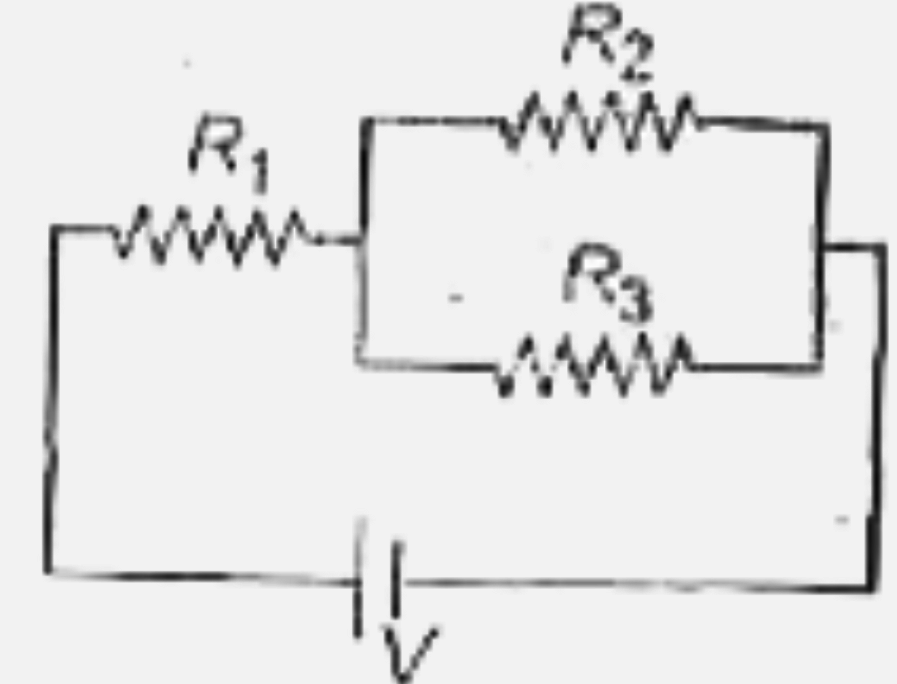
View SolutionIn the labortary, the high emf of a battery is measured by using potentiometer and two resistance R1 and R2, where R1<<R2 as shown in the figure
R1=(100±0.10)Ω and R2=(9900±9.90)Ω, AB=1m The voltage across R1, when switches S1 & S2 are connected to point 1 and point 2 is balanced against l1=(60±0.06)cm. when the switches S1 and S2 are shifted to point 3 and point 4 as shown in the figure, the potential difference of standard E0=2 volt is balanced against length l2=(75±0.075)cm. The maximum error in emf of battery E is __________ volts (upto two decimal places)
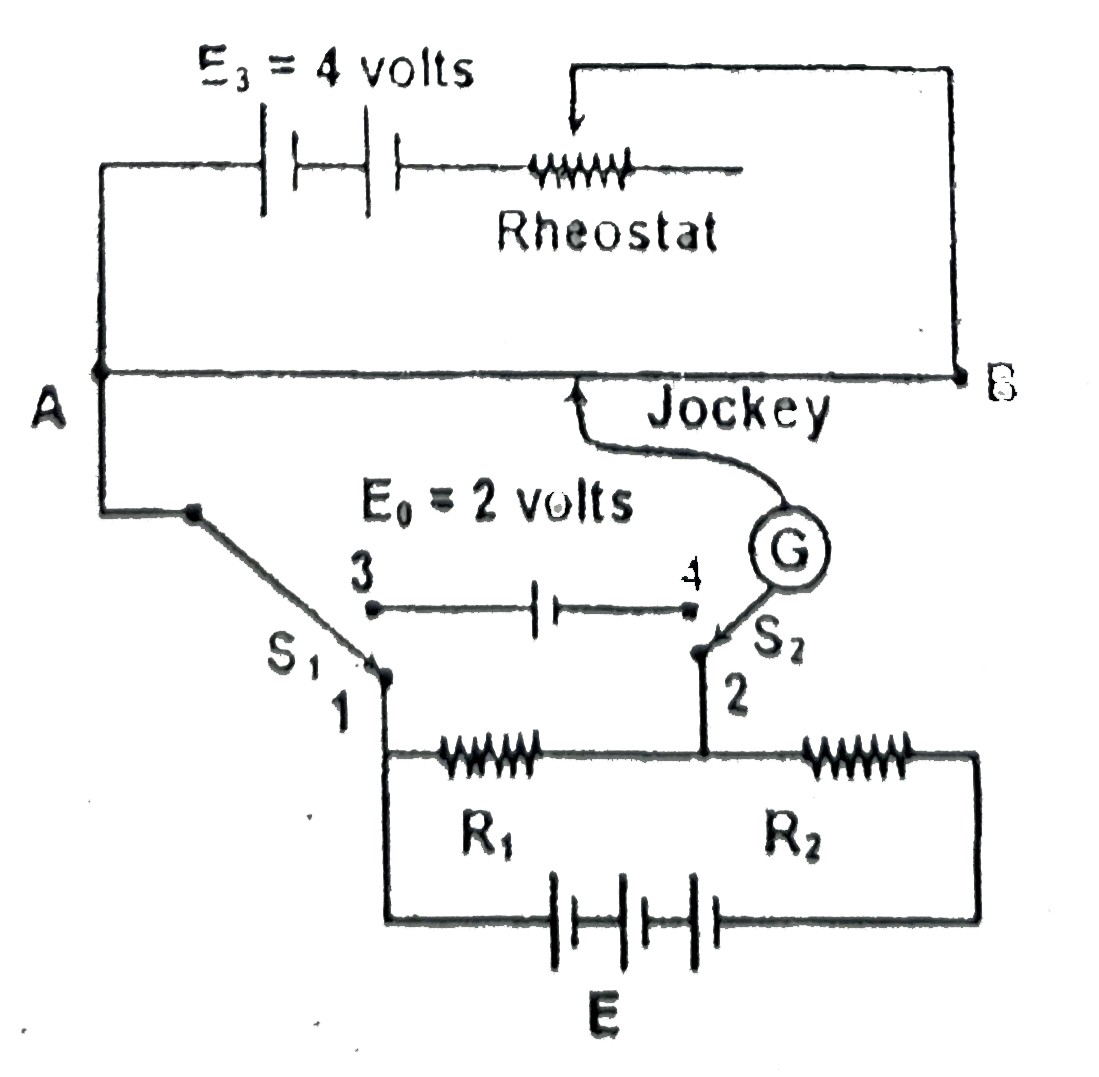
View SolutionTwo cells of emf E1 and E2 are joined in opposition (such that E1>E2) . If r1 be the internal resistances and R be the external resistance, then the terminal potential difference is
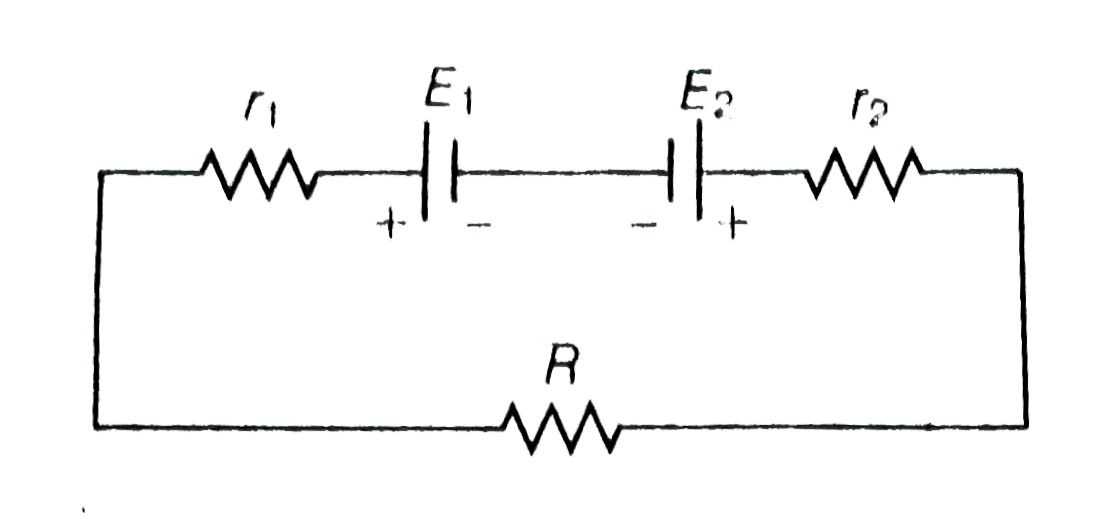
View SolutionIn the circuit shown in fig E1=3vo<s,E2=2vo<s,E3=1vo<andR=r1=r2=r3=1ohm.
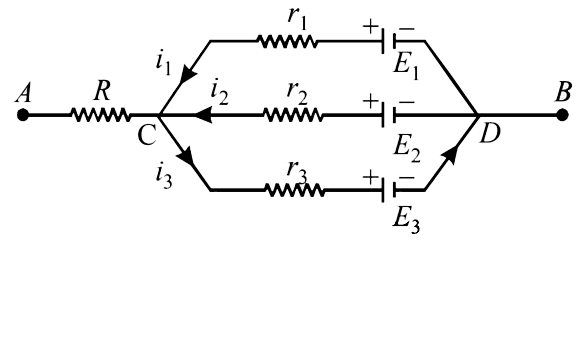
(i) Find the potential difference between the points A and B and the currents through each branch.
(ii) If r2 is short circuited and the point A is connected to point B, find the current through E1,E2,E3 and the resistor R.
View SolutionIn the circuit in figure E1=3V,E2=2V,E3=1V and R=r1−r2−r3=1Ω
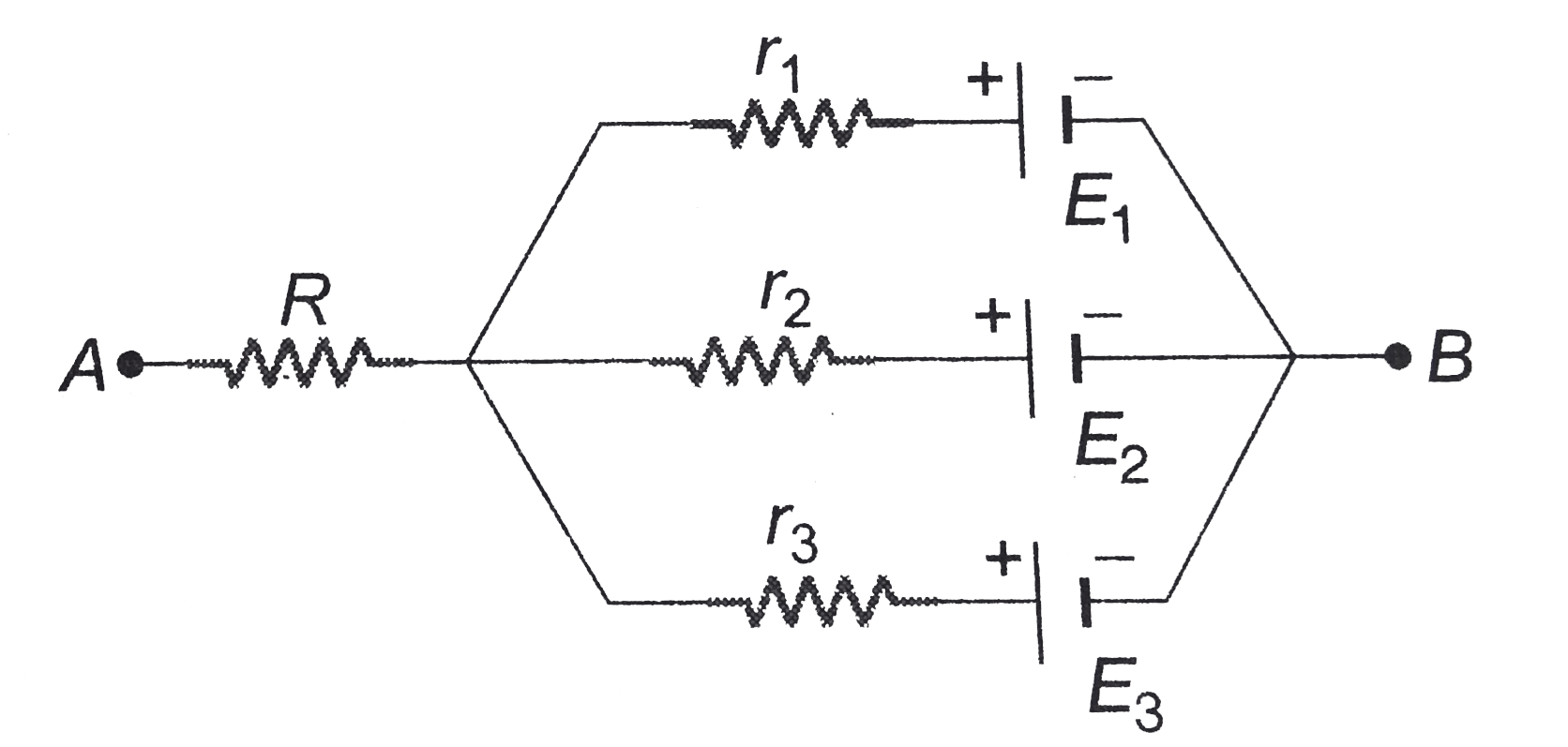
a. Find the potential differece between the points A and B and the currents through each branch.
b. If r2 is short circuited and the point A is connected to point B, find the currents through E1,E2,E3 and the resistor R
View Solution
